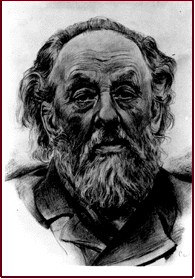

Konstantin E. Tsiolkovskiy (1857-1935) became enthralled with the possibilities of interplanetary travel as a boy, and at age fourteen started independent study using books from his father¹s library on natural science and mathematics. He also developed a passion for invention and constructed balloons, propelled carriages, and other instruments. To further his education, his parents sent young Tsiolkovskiy to Moscow to pursue technical studies. In 1878, he became a teacher of mathematics in a school north of Moscow. Tsiolkovskiy first started writing on space in 1898, when he submitted for publication to the Russian journal, Nauchnoye Obozreniye (Science Review), a work based upon years of calculations that laid out many of the principles of modern space flight. The article, ³Investigating Space with Rocket Devices," presented years of calculations that laid out many of the principles of modern space flight and opened the door to future writings on the subject. In it, Tsiolkovskiy described in depth the use of rockets for launching orbital space ships. There followed a series of increasingly sophisticated studies on the technical aspects of space flight. In the 1920s and 1930s Tsiolkovskiy proved especially productive, publishing ten major works, elucidating the nature of bodies in orbit, developing scientific principles behind reaction vehicles, designing orbital space stations, and promoting interplanetary travel. He also furthered studies on many principles commonly used in rockets today: specific impulse to gauge engine performance, multistage boosters, fuel mixtures such as liquid hydrogen and liquid oxygen, the problems and possibilities inherent in microgravity, the promise of solar power, and spacesuits for extravehicular activity. Significantly, he never had the resources‹nor perhaps the inclination‹to experiment with rockets himself. After the Bolshevik revolution of 1917 and the creation of the Soviet Union, Tsiolkovskiy was formally recognized for his accomplishments in the theory of space flight. Among other honors, in 1921 he received a lifetime pension from the state that allowed him to retire from teaching at the age of sixty-four. Thereafter he devoted full time to developing his space flight theories studies. He died at his home in Kaluga on 19 September 1935. His theoretical work greatly influenced later rocketeers both in his native land and throughout Europe. While less well known during his lifetime in the United States, Tsiolkovskiy¹s work enjoyed broad study in the 1950s and 1960s as Americans sought to understand how the Soviet Union had accomplished such unexpected success in its early efforts in space flight. See "Konstantin E. Tsiolkovskiy," biographical file, NASA Historical Reference Collection, NASA History Division, NASA Headquarters, Washington, DC.

Updated February 8, 2005